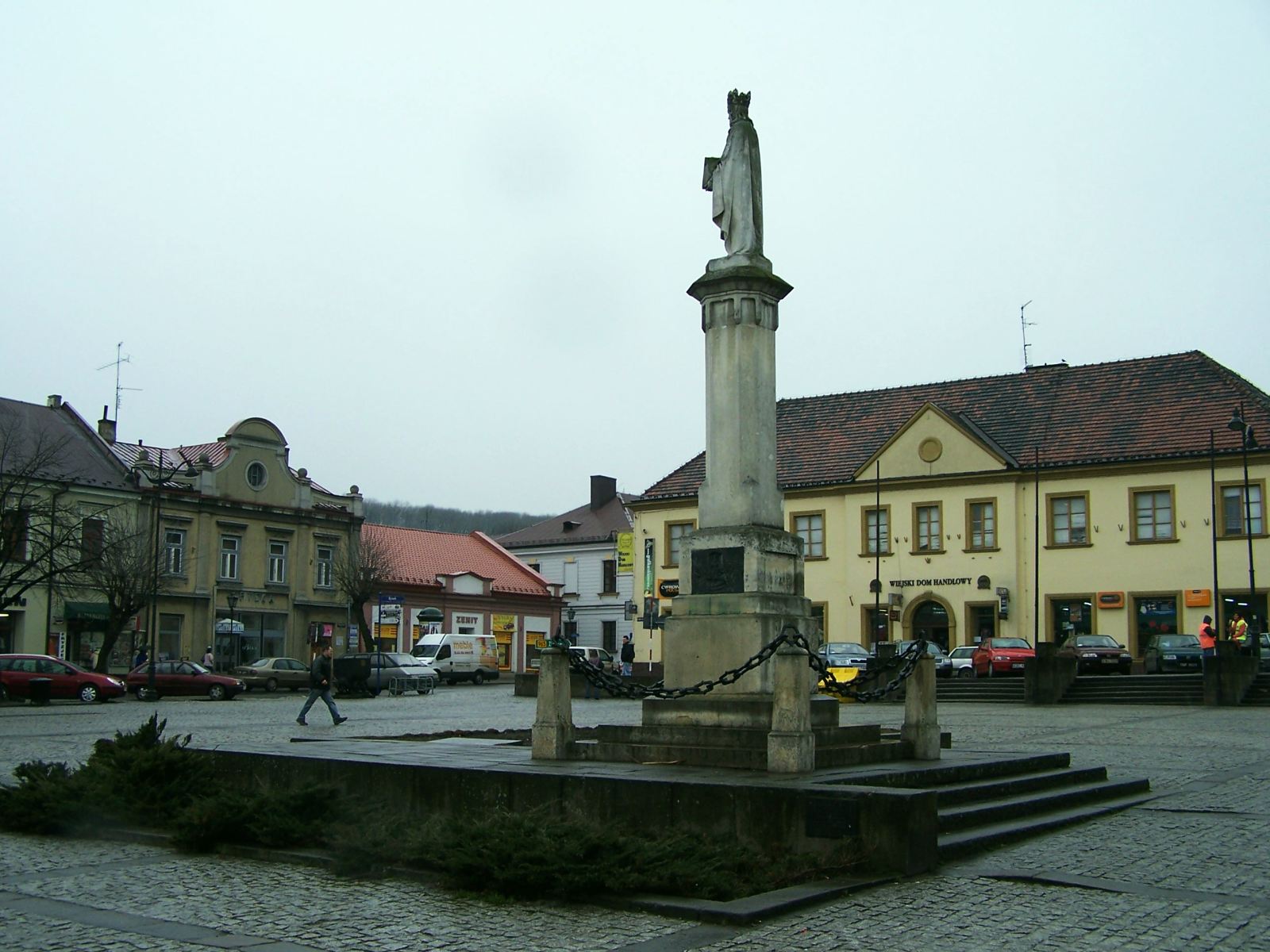- Bochnia
Infobox Settlement
name = Bochnia

imagesize = 250px
image_caption = Main square
image_shield = POL Bochnia COA.svg
pushpin_
pushpin_label_position = bottom
subdivision_type = Country
subdivision_name = POL
subdivision_type1 = Voivodeship
subdivision_name1 = Lesser Poland
subdivision_type2 = County
subdivision_name2 =Bochnia County
subdivision_type3 =Gmina
subdivision_name3 = Bochnia (urban gmina)
leader_title = Mayor
leader_name = Bogdan Kosturkiewicz
established_title = Established
established_date =12th century
established_title3 = Town rights
established_date3 = 1253
area_total_km2 = 29.9
population_as_of = 2006
population_total = 29373
population_density_km2 = auto
timezone = CET
utc_offset = +1
timezone_DST = CEST
utc_offset_DST = +2
latd = 49 | latm = 59 | lats = | latNS = N | longd = 20 | longm = 26 | longs = | longEW = E
postal_code_type = Postal code
postal_code = 32-700
area_code = +48 14
blank_name = Car plates
blank_info = KBC
website = http://www.bochnia.pl Bochnia Audio-IPA-pl|pl-Bochnia.ogg|'|b|o|h|ń|a is a town of 30,000 inhabitants on the river Raba in southernPoland , 35 km southeast ofKraków . It is most famous for its salt mine, the oldest still existing inEurope , built circa1248 .Since Poland's administrative reorganization in
1999 , Bochnia has been the administrative capital ofBochnia County inLesser Poland Voivodeship . Before reorganization it was part ofTarnów Voivodeship .History
Bochnia is one of the oldest cities of
Lesser Poland . The first known source mentioning the city is a letter of1198 , whereinAymar the Monk ,Latin Patriarch of Jerusalem , confirmed a donation by local magnate Mikora Gryfit to themonastery of theOrder of the Holy Sepulchre inMiechów . The discovery of a major vein of rock salt at the site of the present mine in1248 led to the granting of city privileges (Magdeburg rights ) on27 February 1253 byBolesław V the Chaste .Town & sights
* The oldest
salt mine in Europe and in the world (13th century), is an underground town today.
* St. Nicholas Basilica
* Old town and historical buildings
* Statues ofLeopold Okulicki andCasimir III of Poland
* The Older parts of the cemetery at Oracka Street
* The Catholic cemetery
* The Jewish cemeterySalt Mine
The
Bochnia Salt Mine (Polish: "kopalnia soli w Bochni") is one of the oldest salt mines in the world and the oldest one inPoland and Europe. The mine was established between the 12th and 13th centuries after salt was discovered in Bochnia. The mines measure 4,5 kilometres in length and 468 metres in depth at 16 different levels. Deserted chambers, shafts and passages form a so called underground town, which is now open to sightseers. The largest of the preserved chambers has been converted into a sanatorium.Education
*
Wyższa Szkoła Ekonomiczna Notable Residents
* St. Stanisław Szczepanowski, Poland's first native saint.
*Ralph Modjeski (Rudolf Modrzejewski), notable engineer in theUnited States , born 1861 to actressHelena Modjeska .
*Jan V. Mládek (Jan Viktor Mládek, 1912 Bochnia – 1989Washington, D.C. ), Czechoslovak economist, official of its exile government during World War II working withJohn M. Keynes and on preparations of theInternational Monetary Fund andBretton Woods agreements , official of IMF for nearly 30 years, with his wifeMeda Mládková established a foundation sponsoring work of Central European artists.
*Bernhard Storch - World War II heroTwin towns
Bad Salzdetfurth ,Cavtat ,Kežmarok , Roselleee also
*
Wieliczka Salt Mine
*Photograph "An execution of Poles in Bochnia" in the articleEinsatzgruppen External links
* [http://www.bochnia.pl/ Official website of Bochnia]
Wikimedia Foundation. 2010.

